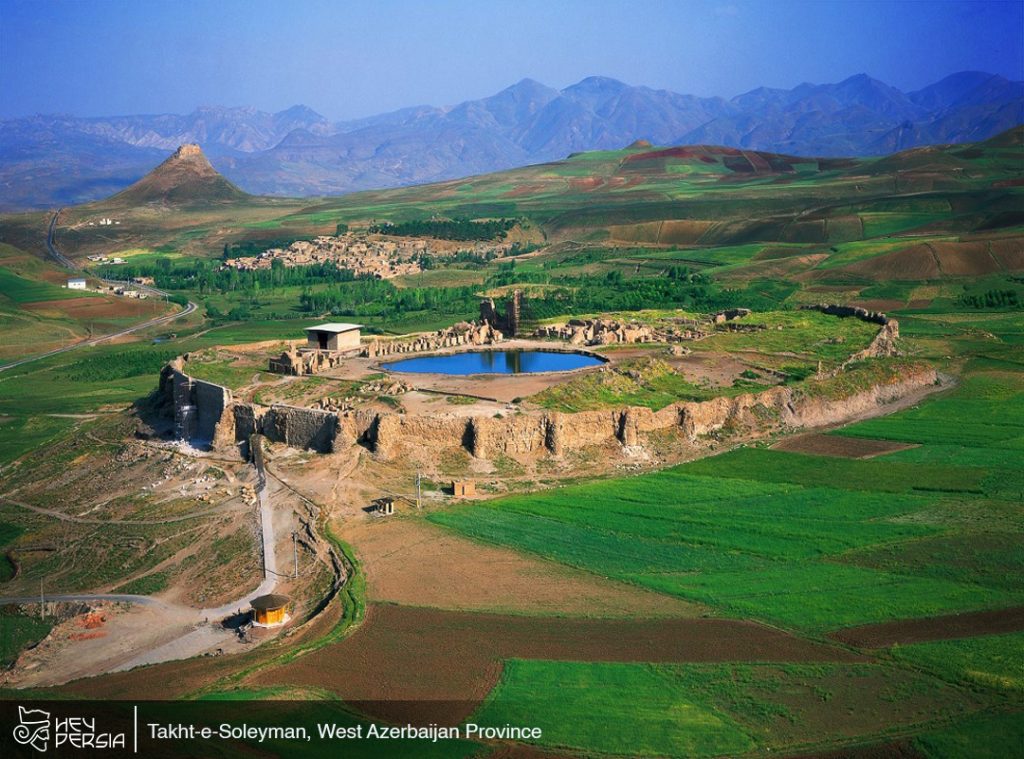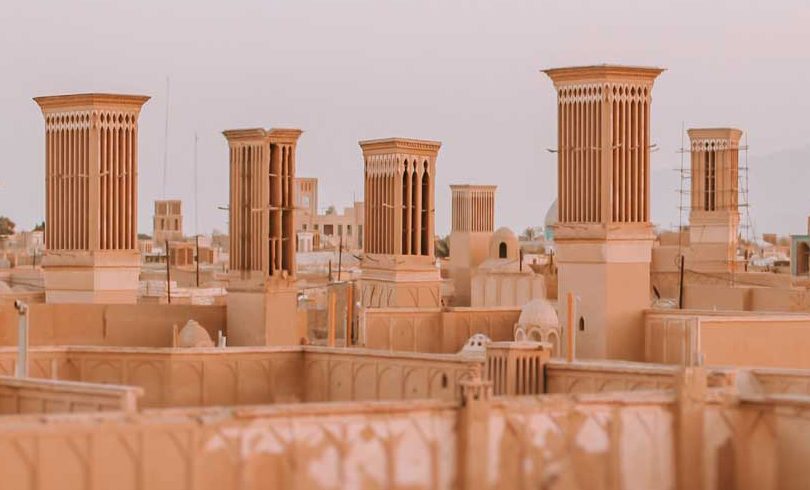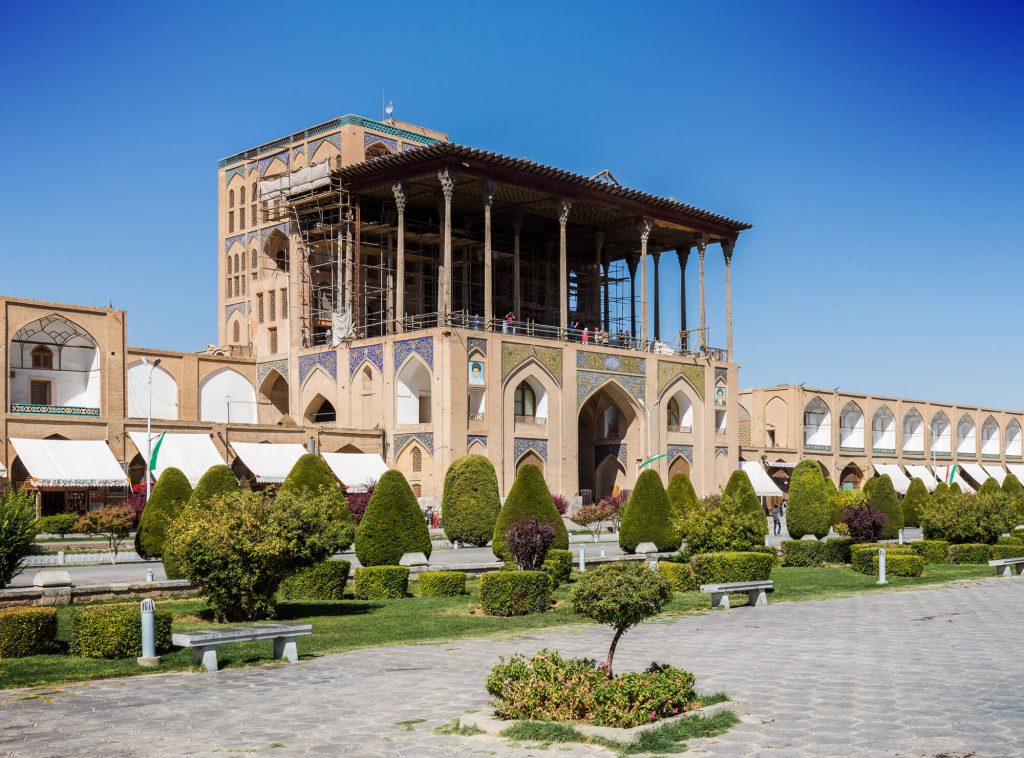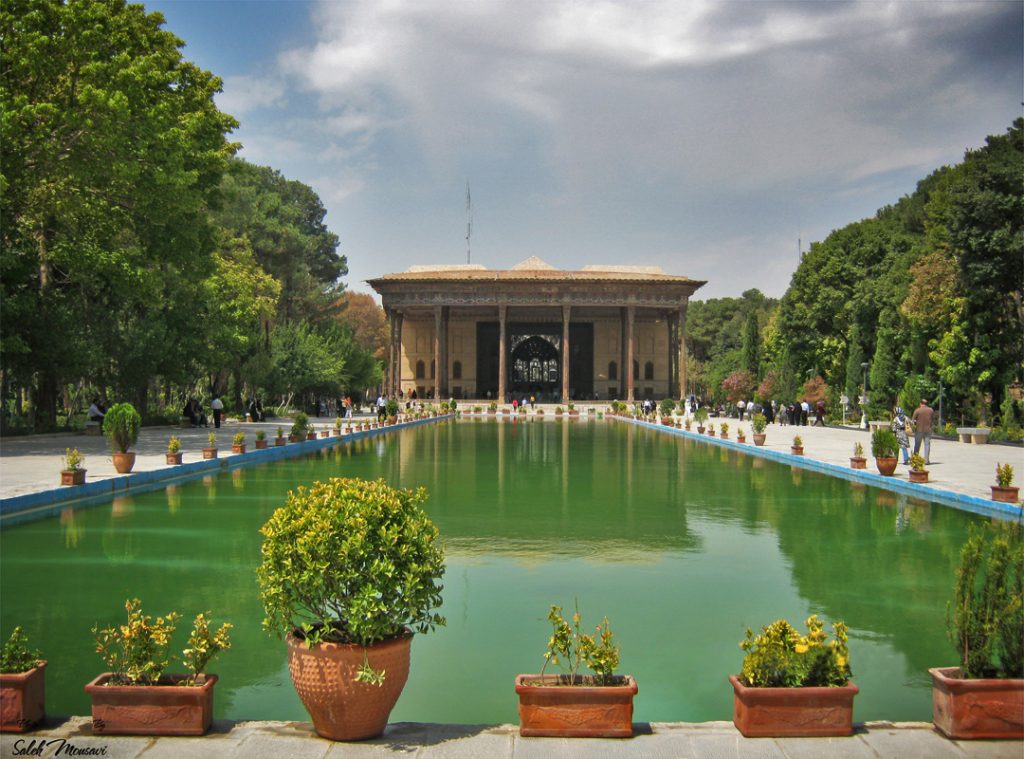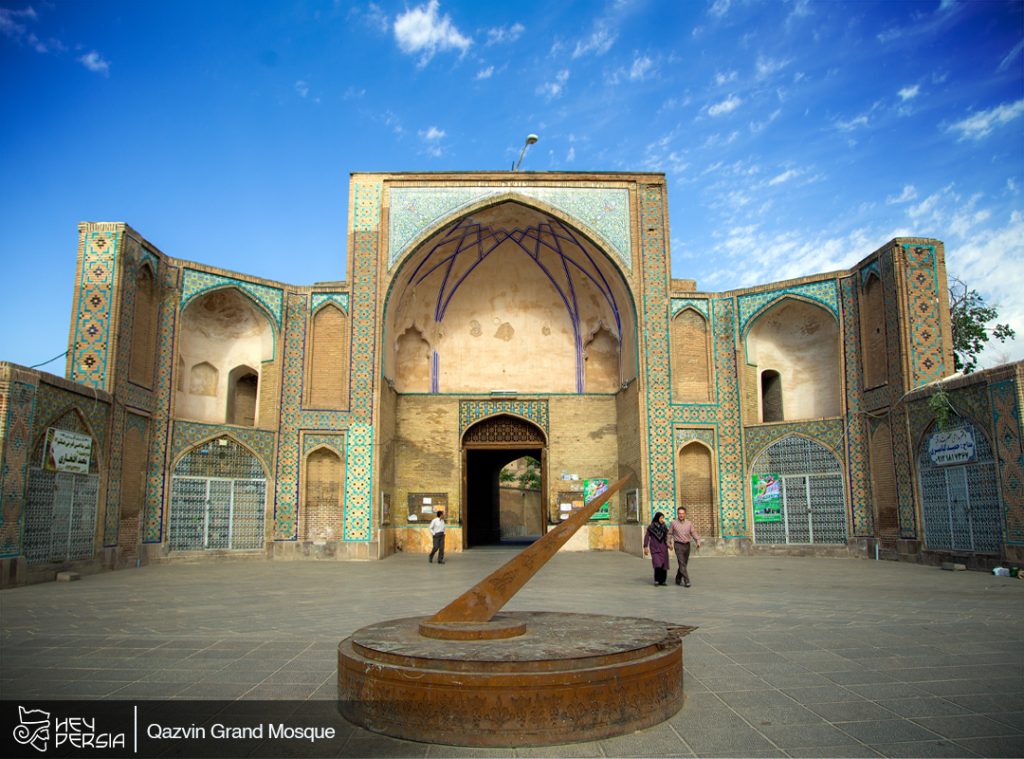Takht-e-Soleyman, also known as the “Throne of Solomon,” is a remarkable archaeological site located in the northwest of Iran, in the West Azerbaijan Province. It stands as a testament to the rich historical and cultural heritage of the region, with a history dating back over 1,500 years. Takht-e-Soleyman has played a significant role in the development of various religious and cultural traditions throughout the ages. Stay with Hey Persia to learn more.
Historical Significance of Takht-e-Soleyman in Iran
Generally, The historical significance of Takht-e-Soleyman is deeply intertwined with its role as a spiritual and religious center. It is believed that the site was initially established during the Sassanid Empire, around the 6th century CE. However, its importance increased during the Parthian and early Islamic periods.
Takht-e-Soleyman: Architecture and Layout
The Central Crater Lake
One of the most striking features of Takht-e-Soleyman is its central crater lake, which adds an element of mystique to the site. The lake is surrounded by the remnants of ancient buildings and structures, creating a picturesque and serene atmosphere. This lake is often associated with divine symbolism and has played a significant role in the religious rituals practiced at the site.
The Zoroastrian Fire Temple
At the heart of Takht-e-Soleyman stands the Zoroastrian Fire Temple, which is the most iconic and historically significant structure on the site. Zoroastrianism, one of the world’s oldest monotheistic religions, considers fire to be a symbol of purity and divinity. The presence of a fire temple at Takht-e-Soleyman highlights the spiritual importance of this location for Zoroastrians.
The Anahita Temple
Another notable structure within the complex is the Anahita Temple, dedicated to the ancient Persian goddess of fertility and water. The temple’s design and architectural elements reflect the religious beliefs and practices of the time. The goddess Anahita was revered for her role in ensuring the abundance of water and the fertility of the land.
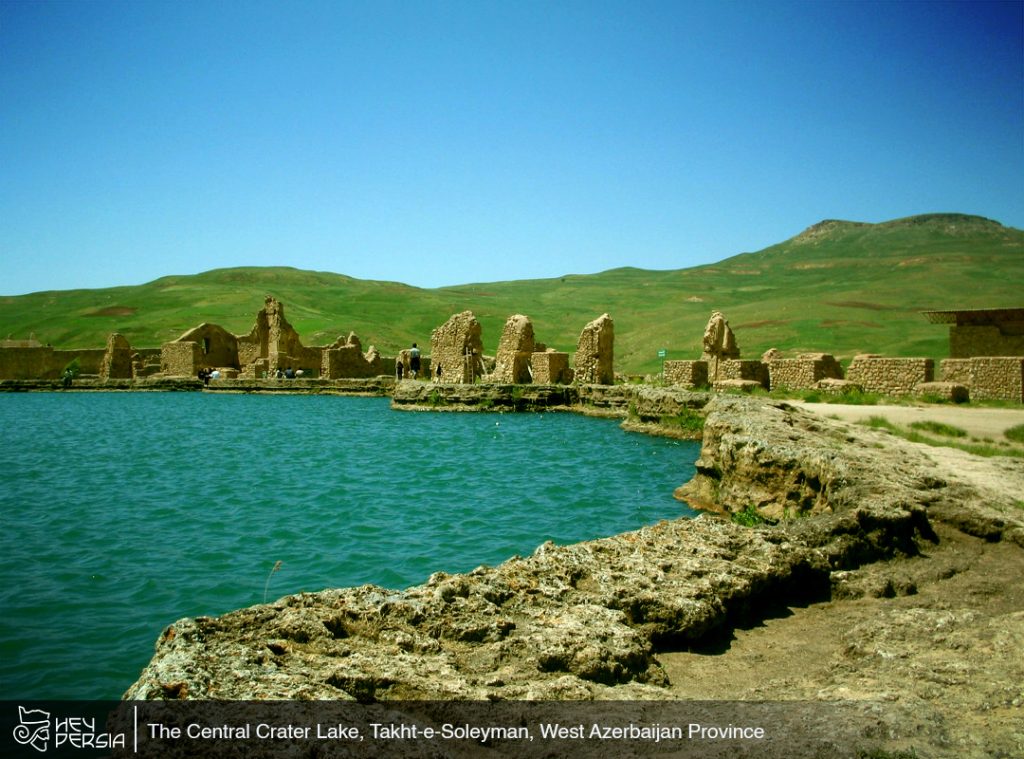
Takht-e-Soleyman in Iran: Cultural Influence
Accordingly, The influence of Takht-e-Soleiman extends beyond religious significance. It has been a hub for cultural exchanges and has played a role in the development of art, architecture, and literature in the region. The site has inspired poets, artists, and scholars throughout history, contributing to the cultural richness of Iran.
Religious and Spiritual Significance of Takht-e-Soleyman in Iran
Takht-e-Soleyman holds immense religious and spiritual significance for various faiths and traditions:
Zoroastrianism
Furthermore, For Zoroastrians, Takht-e-Soleyman is a sacred place where the eternal fire was maintained, symbolizing the presence of Ahura Mazda, the supreme deity in Zoroastrianism. Pilgrims from far and wide came to worship and participate in rituals at the fire temple.
Sufism
During the Islamic era, Takht-e-Soleiman became a center for Sufi mysticism. Sufi orders established themselves at the site, emphasizing spiritual growth and inner transformation. The serene surroundings and the proximity to the ancient fire temple added to the mystic appeal of Takht-e-Soleiman for Sufi practitioners.
Influence on Art and Literature
Takht-e-Soleiman’s beauty and spiritual ambiance have inspired poets, writers, and artists for centuries. Persian poets, such as Ferdowsi and Hafez, have referenced the site in their works, celebrating its cultural and spiritual significance.
Takht-e-Soleyman: Preservation and UNESCO Recognition
Recognizing the historical and cultural importance of Takht-e-Soleiman, it was designated as a UNESCO World Heritage Site in 2003. This designation has helped raise awareness about the site’s significance and the need for its preservation.
Takht-e-Soleyman: Visiting Today
Today, Takht-e-Soleyman is open to visitors who can explore its ancient ruins, the central crater lake, and the historical structures that have endured for centuries. Tourists and pilgrims alike can experience the site’s spiritual aura while appreciating its architectural marvels.
Takht-e-Soleyman in Iran
Takht-e-Soleyman, the “Throne of Solomon,” stands as a remarkable testament to Iran’s rich historical and cultural heritage. Its historical significance, architectural marvels, and spiritual importance have made it a place of reverence and inspiration for people from various religious and cultural backgrounds. As a UNESCO World Heritage Site, Takht-e-Soleyman continues to be a beacon of Iran’s enduring cultural legacy, inviting visitors to explore its ancient mysteries and timeless beauty.

